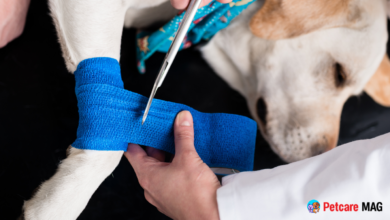
People lose their pets more often than they think. About 15% of people who get a cat will lose it in the first five years after getting it. Even if you try to stop it, it happens in the blink of an eye.
As part of your emergency plan, you should know what to do if you lose your pet. Time is crucial to find your cat after it goes missing.
How Do You Find Your Lost Kitten?
If your Kitten has gone missing, follow these helpful tips.
Step 1: Search Your House
Most missing cats get out of the house and go outside to roam. However, you might think they got out while hiding in the house. The first step is to look under beds, behind closed doors, and in closets, cabinets, attics, and basements—anywhere a cat could hide.
Step 2: Check the Neighborhood
You should immediately walk around the neighborhood once you know your pet isn’t in your house. Talk to your neighbors and tell them how to reach you if they see your pet. Call your cat’s name and shake their favorite treat or food bag loudly as you walk around the neighborhood.
Many cats are driven by food, so they may come running when they hear the treat bag shake. Most cats are found within 500 meters of their home or where they first ran away, so a thorough search of the immediate area is one of the best ways to start looking for your pet.
Step 3: Use Social Media
If your neighborhood search is unsuccessful, turn to social media. Many websites and apps are extremely valuable in quickly spreading the word and reuniting lost pets with their owners. Nextdoor is an app that links you to your nearby neighbors in a social network where you can share information and post notices. Facebook and Instagram also have groups dedicated to lost pets.
Share clear, recent photos and other information, such as health status (does your pet require daily medications?), behavior (is your cat flighty or friendly?), and what to do if someone sees your pet. Post to local rescue organizations, shelters, veterinary hospitals, and your social media account.
Also Read: Best Dry Cat Foods 2023: Top 9 Picks for Good Health
Step 4: Make Some Calls
Even though the Internet and apps can help find lost pets, using “old school” methods is still important. Call your local shelters, veterinary offices, humane societies, police stations, and animal control to let them know.
Step 5: Put Up Posters
Cover your area with bright, neon-colored posters that are easy to read and have a clear picture of your cat. Consider putting up a reward for the safe return of your pet. Put your posters and flyers in busy places so as many people as possible will see them.
Step 6: Update Your Cat’s Microchip Info
If your pet has a microchip, make sure the company has the most recent information about how to reach you. Many companies that make microchips also help people whose pets get lost by contacting local vets and shelters.
Step 7: Set Up a Humane Trap
You can buy, rent, or borrow a trap that isn’t cruel and put it near your home or where you last saw your cat. One of these traps, the “Have-A-Heart” trap, lets you use food and water as “bait.” As soon as an animal walks into the trap, it will close without hurting the animal. Using this method could also trap wildlife, so be careful!
Step 8: Put Your Cat’s Things Outside
Consider placing your cat’s litter box, favorite toys, bed, etc., outside to entice them to return.
Step 9: Try a Wildlife or Security Camera
Cats are well-known for their ability to hide. Using a wildlife camera or a security camera can help you find out if your cat is still around and where the best place is to look for it or set up a trap.
Step 10: Hire a Pet Detective
If nothing else works, you could hire a pet detective. This isn’t just something you see in the movies. There are a lot of places that can help you find your lost cat. They might even use a search and rescue dog to help them find the scent.
Don’t stop believing! Call more shelters and animal hospitals. Update your social media often or change the color of your posters to get more attention. Tell people you are still looking for your cat and won’t give up.
What Are the Chances of Finding a Missing Cat?
Unfortunately, not all lost cats are returned to their owners, but more than sixty percent are. A 2018 study found that one-third of lost cats return home within the first week. After approximately 2 to 3 months, this percentage rises to 50 to 60%.
The likelihood of a successful recovery decreases with time, but don’t give up! Years later, some pets have been reunited with their pet parents.
What to Do If You Find Your Cat
Most vets say that, at the very least, you should take your pet to get a physical exam. This depends on how your pet is doing and how long they were missing.
Check your cat with your vet for fleas, ticks, cuts, wounds, bites, and anything that seems strange. Your vet will check their body weight and condition and may suggest blood work to check how well they are hydrated and how well other organs are working.
If your pet is stuck in a tree, on a roof, or somewhere else you can’t reach, you may need to call the fire department or animal control for help. Even if a cat is trapped, wildlife removal services might be able to help. If your pet is stuck, but can still reach it, try using Vaseline or another lubricant (being careful around the eyes and mouth) to help it get free.
Cover your pet’s eyes, speak quietly, or pet them to keep them calm. Don’t let a false fear of being bitten or scratched hurt you. If you need to protect yourself, use thick gloves, muzzles, and blankets or call the police to be safe.
How to Prevent Your Cat From Getting Lost Again
So what can pet owners do to prevent this? Having a plan for emergencies in place is an excellent starting point.
If your cat does not have a microchip, discuss this simple yet potentially life-saving device with your veterinarian. Most cats are inexpensive and simple to implant with microchips during routine exams.
Register your microchip with the company so that if your cat ever goes missing, the company will have your information on file. Consider the circumstances that could cause your cat to flee. Animals may experience anxiety and panic when exposed to loud noises such as fireworks, thunderstorms, or boisterous parties.
If you anticipate these events, confine your cat to a secure, quiet location until the danger has passed. Consider purchasing them a collar with an ID tag bearing your contact information. Multiple pet tracking devices can be attached to your pet’s collar, allowing you to monitor their location constantly.
Remember not to panic if you ever find yourself in this predicament. Act quickly to maximize your chances of reuniting with your pet. Engage the assistance of friends, neighbors, and family. Even though not all pets return home, the quicker you act and the larger your search network, the more likely you will be reunited with your furry companion.








One Comment